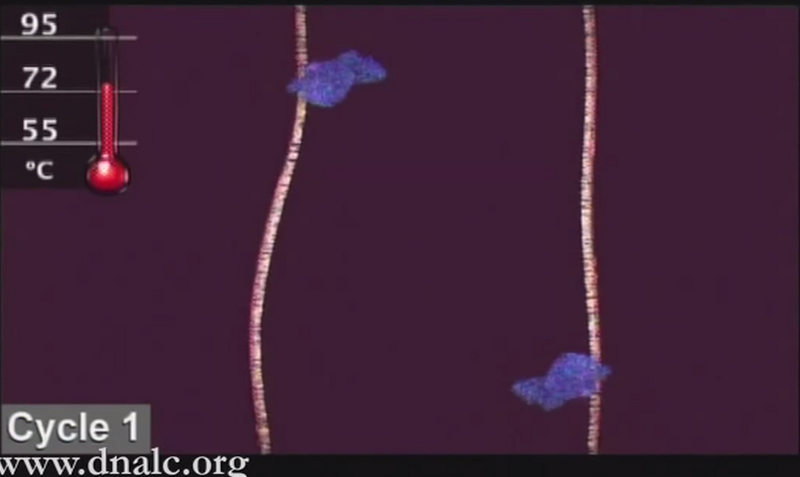BME100 f2014:Group22 L4
| Home People Lab Write-Up 1 | Lab Write-Up 2 | Lab Write-Up 3 Lab Write-Up 4 | Lab Write-Up 5 | Lab Write-Up 6 Course Logistics For Instructors Photos Wiki Editing Help | ||||||||||||||||||||||||||||||||||
|
OUR TEAM
LAB 4 WRITE-UPProtocolMaterials
From PCR Virtual Lab, a simulation on the Learn.Genetics site at the University of Utah website. OpenPCR program
Research and DevelopmentPCR - The Underlying Technology What Are the Components of a PCR Reaction?PCR consists of a solution of sample DNA to be amplified, as well as primer molecules, Taq Polymerase enzymes, and deoxyribonucleotides, or dNTP's. The template DNA can be any DNA extracted from a patient or organism to be tested; this DNA will be processed, and specific sequences of DNA will be isolated and amplified many times so that it can be detected by fluorescent markers if it exists in the sample. In a PCR reaction, the primers mark the beginning of DNA replication and, if the target sequence exists in the sample DNA, the primers bind to a specific sequence of nucleotides that marks the beginning of the target sequence. The primers mark the entry point for Taq Polymerase, an enzyme that begins at a primer and reads from the 3' end of the DNA to the 5' end, assembling a new strand of DNA from free deoxyribonucleotides (dNTP's), the monomers (building blocks) of DNA. From PCR Virtual Lab, a simulation on the Learn.Genetics site at the University of Utah website What Happens During Each Step of Thermal Cycling?During a PCR thermal cycle, the mixture of DNA, dNTP's, and primers are first heated to around 95°C. During this time, the DNA molecules are denatured, splitting into single strands. Next, the cycle cools the PCR tubes and their mixtures down to 57°C, allowing the DNA primers to attach to their respective places on the DNA (annealment), marking it for replication by DNA Taq Polymerase. Next, the mixture is heated slightly to 72°C, which allows the polymerase to bind to the primer sites and begin copying the DNA (extension). Which Nucleotides Bond to Each Other?Adenosine (A) binds to Thymine (T) Cytosine (C) binds to Guanine (G)
| ||||||||||||||||||||||||||||||||||





